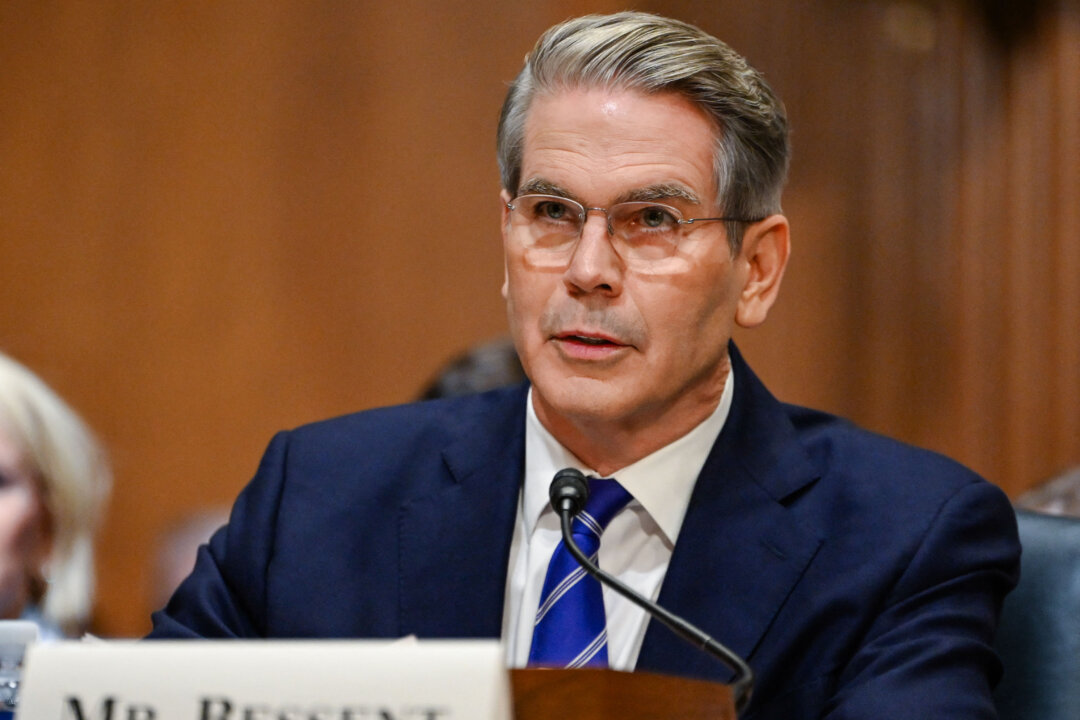Investors will now focus on the Treasury’s borrowing plans.
The U.S. Treasury plans to borrow $1.665 trillion over the next six months, the department announced on Feb. 3 in its first estimate under Secretary Scott Bessent.
According to the Treasury Refunding Estimate, the Treasury projects borrowing $815 billion from January to March. This is $9 billion lower than the October forecast, driven by a higher beginning-of-quarter cash balance.
In the April to June period, the Treasury anticipates borrowing $123 billion.
The Treasury confirmed that it borrowed $620 billion during the October to December quarter, $74 billion higher than initially estimated. Additionally, it finished the three-month span with a cash balance of $722 billion.
With the Treasury’s new chief, market watchers have been waiting to see if officials will change policy, such as shifting from short-term debt sales to long-term maturities and maintaining a smaller cash stockpile. This adjustment could inject volatility into the bond market.
Financial markets will receive a detailed look at the department’s plans for bond and note sales over the coming months when it publishes its Treasury Refunding report on Feb. 5.
Bessent has criticized his predecessor, Janet Yellen, for depending too much on short-term Treasury bills to finance the national debt and manage ballooning budget deficits. Instead, he noted at a Manhattan Institute event this past summer, that the U.S. government should be locking in fixed interest rates for a longer period.
“I think that there is a chance you could get into a good reflexive cycle on debt cost because I think it’s been imprudent to finance at the front end,” he stated.
Republican lawmakers, including Sen. Bill Hagerty (R-Tenn.), have said that Yellen had relied heavily on short-term debt securities because she was waiting for the Federal Reserve to slash interest rates before issuing bonds with longer maturities.
Yellen rejected the claim at a Senate Appropriations Committee hearing on June 4.
“We never time the market,” Yellen told Hagerty.
The Treasury Borrowing Advisory Committee (TBAC), an outside panel of finance sector representatives, said last year that T-bills—with maturities ranging from 30 days to 1 year—lower the federal government’s financing costs. The committee also noted that some studies suggest that increasing the supply of short-term debt instruments could “help improve the stability of the financial system.”
The challenge for the new Treasury regime is maturing short-term debt.
While Yellen issued trillions of dollars in new debt, much of it concentrated in T-bills, Bessent will face the task of refinancing a significant amount of maturing debt in an elevated interest-rate climate.
Domestic demand has been anemic over the last two years. Instead, foreign buyers have accounted for a large share of the Treasury purchases.
“When the Fed started raising interest rates in March 2022, foreign private investors started buying a lot more Treasuries because they liked the higher level of yields,” Torsten Slok, the chief economist at Apollo, said in a note emailed to The Epoch Times.
Foreign markets own more than $8.6 trillion of Treasury securities. In addition to Japan ($1.098 trillion), the other top holders are China ($768 billion) and the United Kingdom ($765 billion).
The benchmark 10-year yield is about 4.56 percent. The 1-year yield is 4.2 percent, while the 30-year bond is 4.8 percent.
Against the backdrop will be a growing national debt.
The national debt is currently above $36 trillion and is forecast to top $52 trillion by 2035. Due to increases in mandatory spending—Social Security, Medicare, and Medicaid—net interest costs are also expected to climb annually over the next ten years. Cumulatively, interest payments will be close to $14 trillion.

Last month, the Federal Reserve signaled that interest rates could be higher for longer. The December Summary of Economic Projections showed that the median policy rate is expected to be reduced twice from the initial estimate of four. Inflation has been the chief reason behind the U.S. central bank’s more hawkish stance on monetary policy.
Alongside the challenges of borrowing, Bessent will confront the debt ceiling. Before the billionaire financier came to Washington, Yellen had already implemented extraordinary measures to prevent a U.S. default. These strategies often involve delaying investments in government retirement funds and tapping into its general account held at the Federal Reserve.
The X-date—the approximate date when the Treasury will exhaust all options—is forecast to be June or July.
“This gives Congress and the new president time to, once again, get out of this self-inflicted kerfuffle, likely until the summer months,” said Lawrence Gillum, the chief fixed income strategist at LPL Financial, in a note emailed to The Epoch Times. “But once those measures run out, the government risks defaulting on its debt unless lawmakers and the president agree to lift the limit on the U.S. government’s ability to borrow.”
At his confirmation hearing before the Senate Finance Committee last month, Bessent expressed his support for abolishing the debt ceiling. President Donald Trump has also said he would endorse efforts to eliminate the debt limit.

